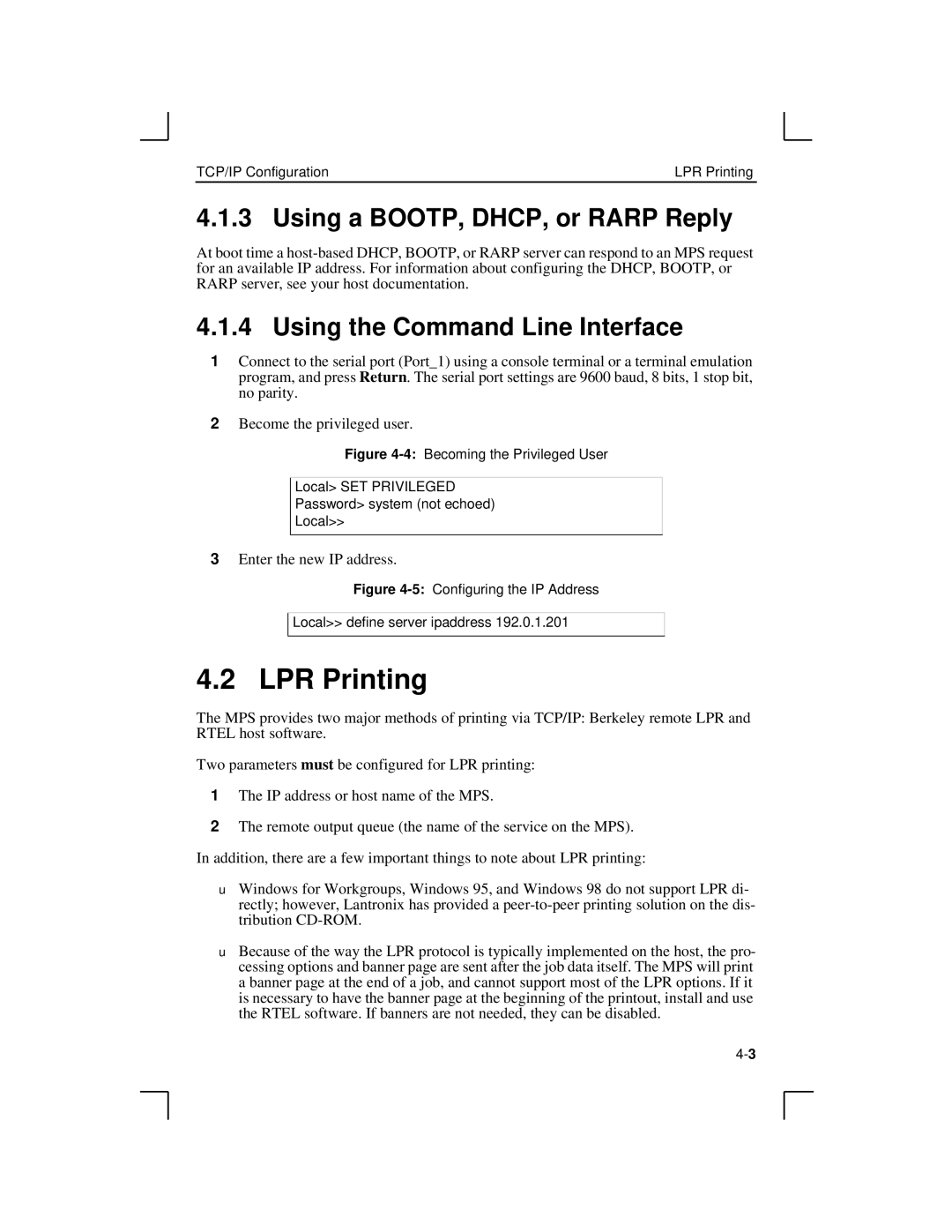
TCP/IP Configuration | LPR Printing |
4.1.3 Using a BOOTP, DHCP, or RARP Reply
At boot time a
4.1.4 Using the Command Line Interface
1Connect to the serial port (Port_1) using a console terminal or a terminal emulation program, and press Return. The serial port settings are 9600 baud, 8 bits, 1 stop bit, no parity.
2Become the privileged user.
Figure 4-4: Becoming the Privileged User
Local> SET PRIVILEGED
Password> system (not echoed)
Local>>
3Enter the new IP address.
Figure 4-5: Configuring the IP Address
Local>> define server ipaddress 192.0.1.201
4.2 LPR Printing
The MPS provides two major methods of printing via TCP/IP: Berkeley remote LPR and RTEL host software.
Two parameters must be configured for LPR printing:
1The IP address or host name of the MPS.
2The remote output queue (the name of the service on the MPS). In addition, there are a few important things to note about LPR printing:
◆Windows for Workgroups, Windows 95, and Windows 98 do not support LPR di- rectly; however, Lantronix has provided a
◆Because of the way the LPR protocol is typically implemented on the host, the pro- cessing options and banner page are sent after the job data itself. The MPS will print a banner page at the end of a job, and cannot support most of the LPR options. If it is necessary to have the banner page at the beginning of the printout, install and use the RTEL software. If banners are not needed, they can be disabled.
